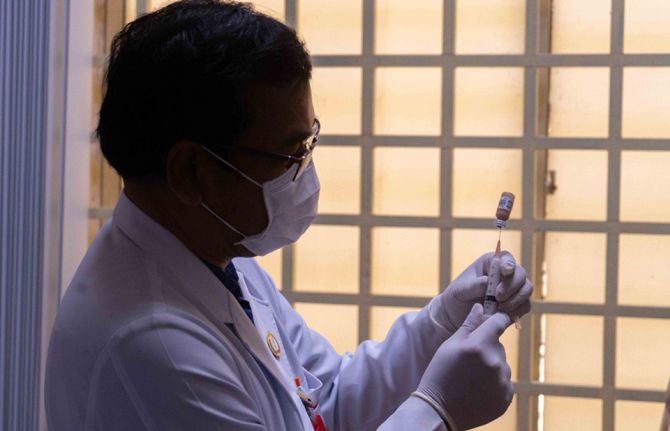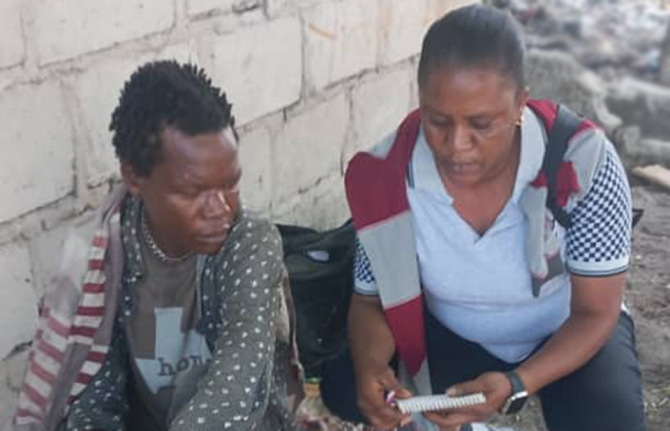
Feature Story
Strategies for “getting to zero” and stopping new HIV infections among injecting drug users discussed as Commission on Narcotic Drugs opens in Vienna
23 March 2011
23 March 2011 23 March 2011
Participants at the discussion “Getting to Zero” – Achieving zero new HIV infections for injecting drug users hosted by the Permanent Representative of the United Kingdom to the United Nations in Vienna, Ambassador Simon Smith on 21 March 2011.
Globally, there are an estimated three million people who inject drugs also living with HIV—with nearly 13 million more at risk of HIV infection. While access to HIV prevention services, including harm-reduction programmes has increased, in 2009 the median coverage of HIV prevention services was 32%.
High-level experts gathered for a round table on “Getting to Zero” – Achieving zero new HIV infections for injecting drug users, in Vienna Austria on 21 March 2011. The event took place on the opening day of the fifty-fourth session of the Commission on Narcotic Drugs (CND) which runs in the city until 25 March 2011. It was convened by UNAIDS and hosted by the Permanent Representative of the United Kingdom to the United Nations in Vienna, Ambassador Simon Smith.
Dr Paul De Lay, Deputy Executive Director, Programme at UNAIDS presented the joint programme’s 2011-2015 strategy, Getting to zero. One of the medium-term goals of the strategy is to prevent all new HIV infections among people who use drugs by 2015. He outlined an approach to delivering results that is both “effective and cost efficient.”
UNAIDS calls for comprehensive, evidence-informed and human-rights-based programmes to be accessible to all people who inject drugs. These include opioid substitution programmes, sterile needle and syringe access and better alignment of law enforcement and public health approaches. To illustrate how this approach can be cost effective, Dr De Lay cited the example of Ukraine where needle and syringe programmes are estimated to cost less than $100 per HIV infection averted. Another programme element required is increasing uptake of antiretroviral therapy for people who use drugs and are living with HIV.
A DFID/World Bank Impact Assessment in Viet Nam that explores the impact of harm reduction efforts was presented by DFID representative Mr Will Niblett. The assessment showed clearly that programmes which were implemented at sufficient scale—for example, distributing at least 200 needles and syringes per drug user per year—had a major impact on reducing HIV incidence. The assessed impact was found not only in relation to the drug-using population which was the direct beneficiary of programmes, but also to incidence rates in the whole population as onward transmission is reduced.
Participants debated the challenges to stopping HIV infections among injecting drug users. Solutions were explored including creating enabling environments, funding community responses and scaling up to ensure optimum coverage and quality programming.
Representatives from both government and civil society and from all regions concluded that concerted efforts to reach the Strategy's goal need to foster more active community responses, address barriers to scale up, and involve both the justice and policing sectors as key partners. Mr Christian Kroll, UNODC Global Coordinator for HIV/AIDS joined Dr De Lay in giving the closing remarks.
Commission on Narcotic Drugs
The Economic and Social Council established the Commission on Narcotic Drugs (CND) in 1946 as the central policy-making body of the United Nations in drug-related matters. CND enables Member States to analyse the global drug situation, provide follow-up to the General Assembly and to take measures at the global level within its scope of action. It also monitors the implementation of the three international drug control conventions and is empowered to consider all matters pertaining to the aim of the conventions, including the scheduling of substances to be brought under international control.
External links
Presentations
Presentations
- “Getting to Zero” UNAIDS 2011-2015 strategy. Presented by Dr Paul De Lay, UNAIDS Deputy Executive Director, Programme. Vienna, 21 March 2011.



